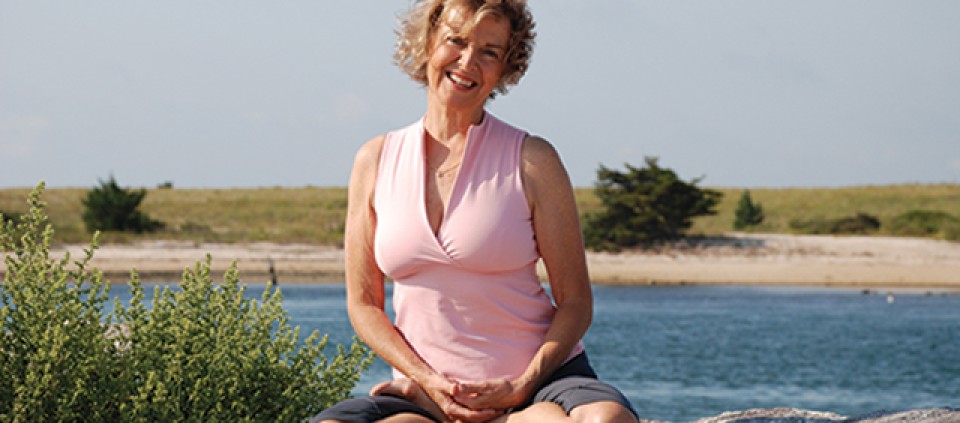The Birth of Power Yoga

by Reyna Eisenstark
I started taking yoga classes in New York City in the mid-1990s. Gyms had begun to offer yoga, and the classes were fast and athletic—like nothing I had associated with yoga before. Yoga had become a workout.
I happened to be at the exact right place and time to witness the birth of what became known as “power yoga.” This intense, fast-paced, flowing style swept through gyms and studios all over the United States in the mid-1990s, particularly on the East and West coasts. In New York, the creation of power yoga can be traced directly back to one teacher: Beryl Bender Birch.
In the early 1980s, Beryl, who had studied with Ashtanga master Sri K. Pattabhi Jois, began teaching vinyasa yoga, which is vigorous and athletic, to runners at the New York Road Runners Club. She called it “stretching and strengthening for the athlete.” She didn’t use the word “yoga” because she figured no one would come to class—back then, yoga was all about slow, gentle stretches. “You would do a posture, and then lie down and breathe for 10 minutes, and then do another posture,” she says. After six months, Beryl told her students that they’d been practicing yoga. They didn’t believe her.
By the late 1980s, Beryl had begun to call her classes “power yoga.” She came up with the name to let people know that the practice “was designed to build significant strength and concentration as well as flexibility,” she says. “It also was a way for the Western mind to relate to this rather obscure version of yoga.” Beryl’s first book, Power Yoga, was published in 1995 and became a best-seller.
As a young woman, Beryl—a skier, runner, and lacrosse player—fell in love with yoga’s athleticism. Like many others, she was initially drawn in by the physical aspect, but soon observed that there was so much more. After she became a teacher, she welcomed people drawn to the physical component of the practice—and gradually invited them to open up to yoga’s other gifts. After months of teaching poses, she would introduce a chant—and slowly the spiritual and the physical would connect. “Asana,” Beryl says, “is a way to train the mind to pay attention. Slowly people become more aware and their field of consciousness grows.”
That was my experience: the physical aspect was what first interested me about yoga. When a teacher started a class with a chant or a meditation, I would wonder when we’d actually get to the yoga, the challenging postures that made me feel stronger and more flexible. I’ll admit that I started every yoga class feeling (hilariously) impatient.
But then, suddenly, I wasn’t. I had begun to make connections. I understood that there were three aspects of yoga: the postures, the breathing, the meditation; now I could see them coming together. Chanting om at the start of class was surprisingly physical, a connection to my body and breath.
Beryl laughed when I shared this, and told me that my experience was one she’s seen over and over again; it’s simply the evolution of the practice. “When you have the true experience, you recognize that everything is connected,” she said. “We are energy fields that are in dynamic exchange with the world around us.”
Reyna Eisenstark is a freelance writer living in Chatham, New York. She writes about paying attention, in all areas of life, in her blog, Collected Stories.
© Kripalu Center for Yoga & Health. All rights reserved. To request permission to reprint, please e-mail editor@kripalu.org.